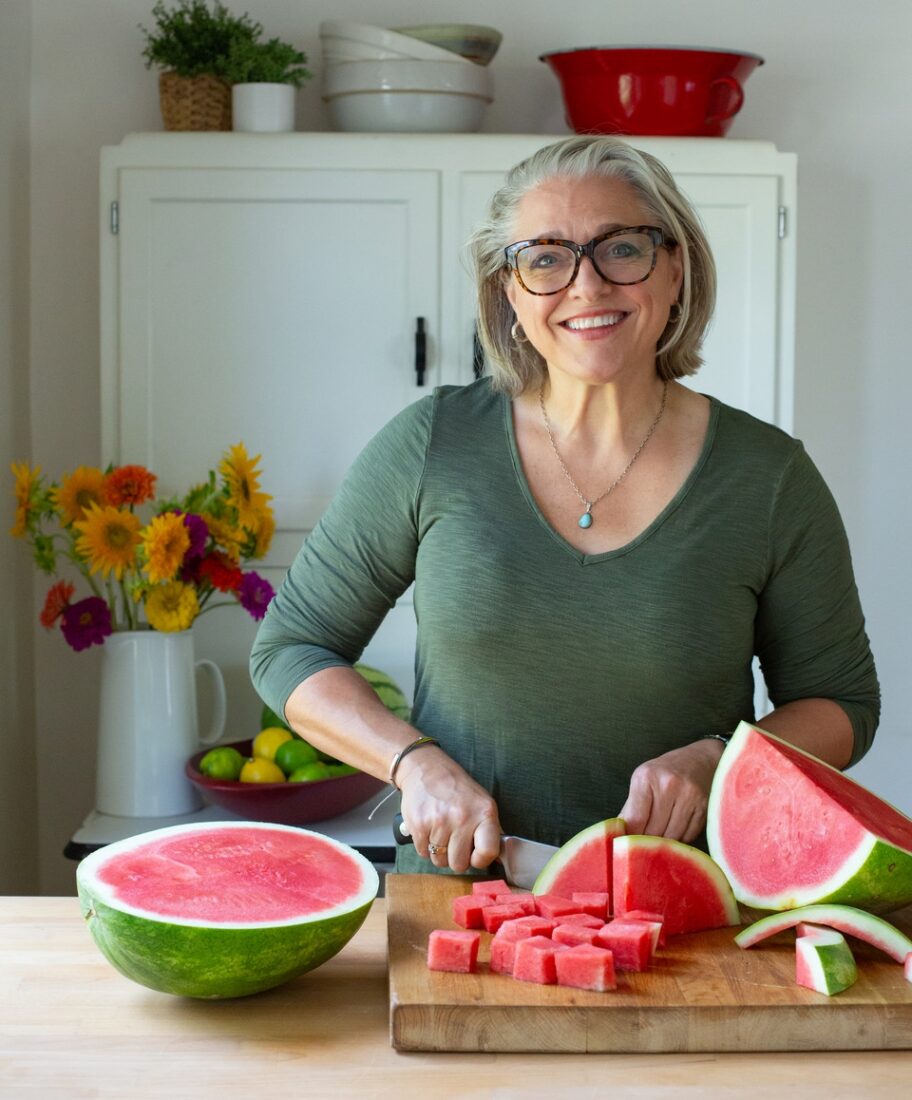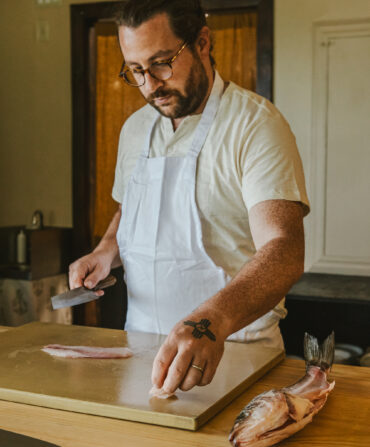When the Georgia-born, French-trained chef Virginia Willis went all-in on getting healthy around four years ago, her “life radically changed,” she says. So radically, in fact, she recently decided to revisit her first cookbook, Bon Appétit, Y’all, and tweak the beloved recipes, making them lighter and more nutrient-dense where possible, without sacrificing flavor. Willis chatted with G&G about the revisions and shared three classic recipes from the book: Vidalia Onion Quiche, Bourbon Sweet Potatoes, and Georgia Pecan Brownies.

What’s changed in the fifteen years since you originally published Bon Appétit, Y’all?
Lord, I wrote, I guess, four more books, right? Basic to Brilliant came out around 2012, and then I was doing a little bit too much bon appetit-ing and gained too much weight and decided I needed to make some changes. So that’s when I wrote Lighten Up, Y’all, which won a Beard Award. That’s one of the greatest honors of my life.
A lot has changed, but a lot has remained the same. And especially now with the update, the recipes are really how I eat in real life.
Some of your family recipes have become other people’s family recipes. Was it hard to go back and edit these recipes that you, and now others, have grown up with?
It’s been amazing because I still, all the time, get tagged on social media: “We made Meme’s biscuits.” My grandmother’s biscuits are in someone else’s house. That’s impactful.
I didn’t touch the things that didn’t need to be touched. You can’t lighten up fried chicken. If it’s not broke, don’t fix it. However, in the first Bon Appétit, Y’all, many recipes would start with one or two tablespoons of oil plus one or two tablespoons of butter. That was the French training; my grandmother would have cooked with one or the other. So for the recipes that made sense, I lightened it up. I was really conscious about the ones that needed it. My life radically changed, and I just wanted people to know that all the food they had been friends with for so long can still be part of their lives, just with adaptations.
If you make an adaptation, especially with the classic dishes, it still has to taste like what it did. If you’re going to present macaroni and cheese, honey, it better be macaroni and cheese! Don’t tell me that pureed pumpkin is going to taste like cheese sauce because it does not.
The South has incredible fresh produce year-round, but there’s this stereotype that Southern food is bad for you. How did that happen?
The South is an agricultural region, and we really do have access to fresh foods most of the year. The positive aspect of that is that we can eat good. Emphasis on the verb can. Fried food used to be a luxury, but after World War II, cottonseed oil became like running water. And so we were able to fry like we were never able to fry before. Fast fried food is cheap and quick, and when food is cheap and quick, rarely does it also check that third box of being nutritionally sound. And then there was the television part, the sort of Food Network–ization of Southern food. People want to see barbecue ribs dripping in sauce, they want to see only the most indulgent Southern foods.
I feel like my whole entire career has been trying to tell people that Southern food is not all unhealthy. There’s something coming out of the ground or off a tree almost twelve months out of the year, really, truly.
When you’re trying to make a meal healthier, what’s the first thing you change?
If you’re just free-pouring oil, you could have, without even thinking about it, added three hundred more calories when you only needed a tablespoon. So that’s the first line of defense, to reduce the amount of fat. If you want butter or olive oil or, heck, there’s even a place for bacon grease still—but you can get the flavor of bacon with one or two slices for a meal for four to six people. You don’t have to just kill a dish with bacon.
Then there’s some other little tricks, like if anything is sour cream, it can almost always be skyr.
I also like to think about things in terms of adding, not just taking away. It’s not about deprivation, it’s about increasing nutritional density. If I can sneak another vegetable in, sneak some more fiber in, then I’m always going to do that.
Something that stands out in this cookbook is how simple it is. No looking up words, no long lists of ingredients. Is that part of your goal?
That’s it! I want people to cook. What good is a cookbook no one wants to cook from? I don’t want to write a coffee table book.
Now we have basically any ingredient we want at our fingertips, but that doesn’t mean you want to deal with it on a Wednesday night. It’s no good for me to flex and say, “I’m a chef and I worked in a Michelin restaurant, and I can make seven-day lamb.” We’re trying to get people to make homemade cooking and not DoorDash. So if we can get people to realize that just a simple combination of green beans, olives, tomatoes, and feta—just four ingredients—is a really lovely side dish, then there you go.
What are your favorite things about the three recipes we’re sharing?
The Bourbon Sweet Potatoes are a classic. Those still have a fair amount of butter, so they’re retaining their indulgence. When you hear the name, you can almost taste it.
The Georgia Pecan Brownies are awesome. The number-one tip for that is that if you double the recipe, it will fill a half sheet.
The Vidalia Onion Quiche? Oh, that’s so good. I feel like we got away from quiche—people thought it was posh to eat, kind of French, but it’s really just an egg pie.
All of these dishes would be great for entertaining. If you’re having guests, you can make them ahead and then serve.
Rapid fire:
What cookbooks raised you? The books I grew up with were Mama’s books, these wonderfully spiral-bound Junior League cookbooks.There was First–You Make a Roux, and then there’s River Road. A book that really impacted me and is one of my bibles is La Varenne Pratique.
Best vacation spot in Georgia? Oh, Lord mercy. Part of my health journey and changing my life is all about walking, so I love the mountains. I would have to say Rabun County.
Best quick, lazy meal? In just five minutes it’s peanut butter and jelly and a glass of milk. But with a little more time, you can do chicken or pork, sear it, take it out, put some cabbage in a pan, sauté the cabbage, put the meat back on top, pop it in the oven—350 for thirty minutes—and you have dinner.
Favorite cooking hack? Put a tin or pan on the top rack of the dishwasher to spray it with cooking oil. Then when you run the dishwasher, you don’t have to wipe up anything.
Best grocery store chain? I migrate more to Publix, but that’s because there’s a really good Publix near me. But I also shop at Whole Foods. And we have so many international markets in Atlanta.
Okra or collard greens? Oh man, you did not do that to me! I’m going to split the difference. Okra in the summer and collard greens in the fall.
Favorite Southern saying? Y’all!








